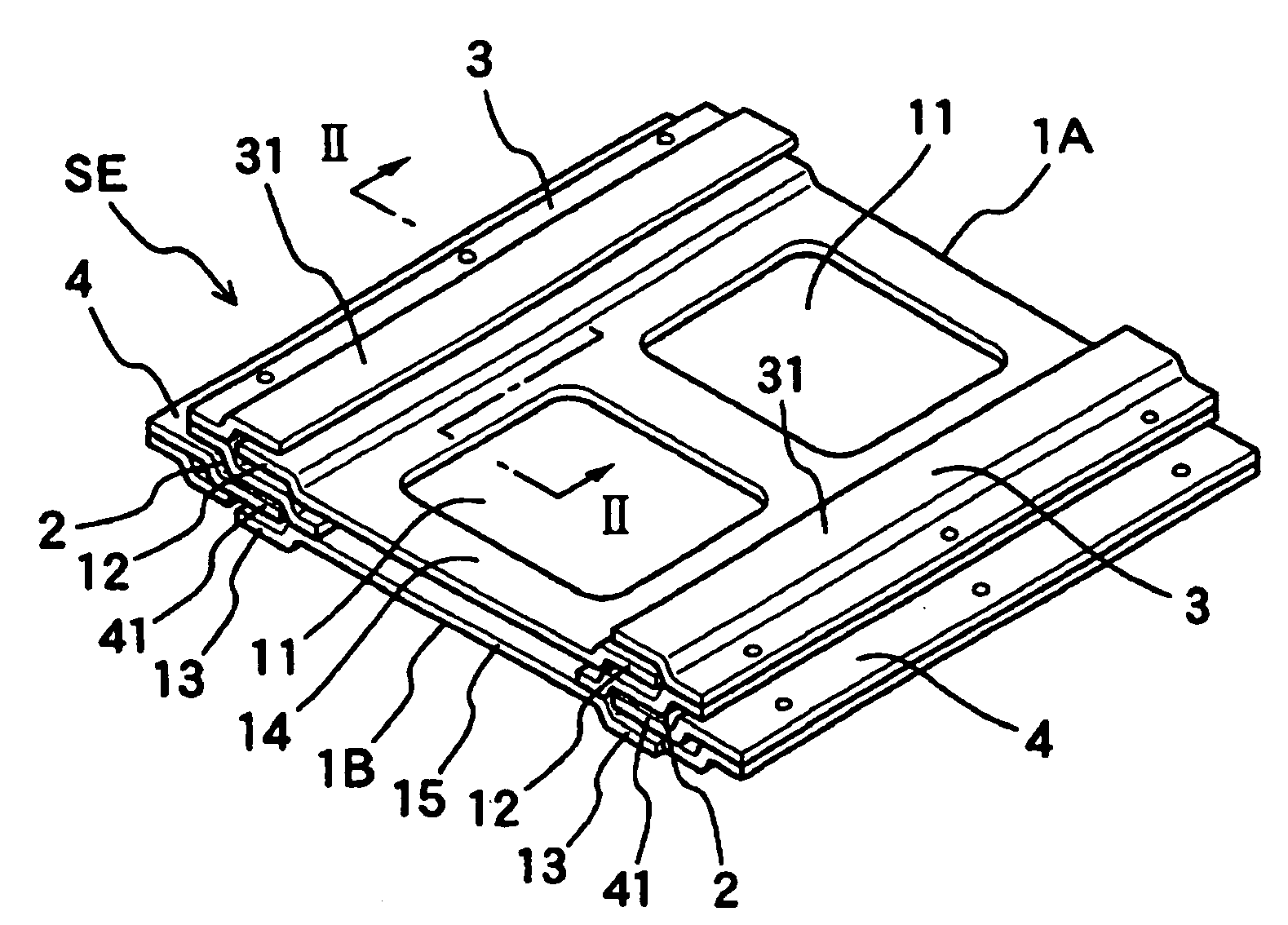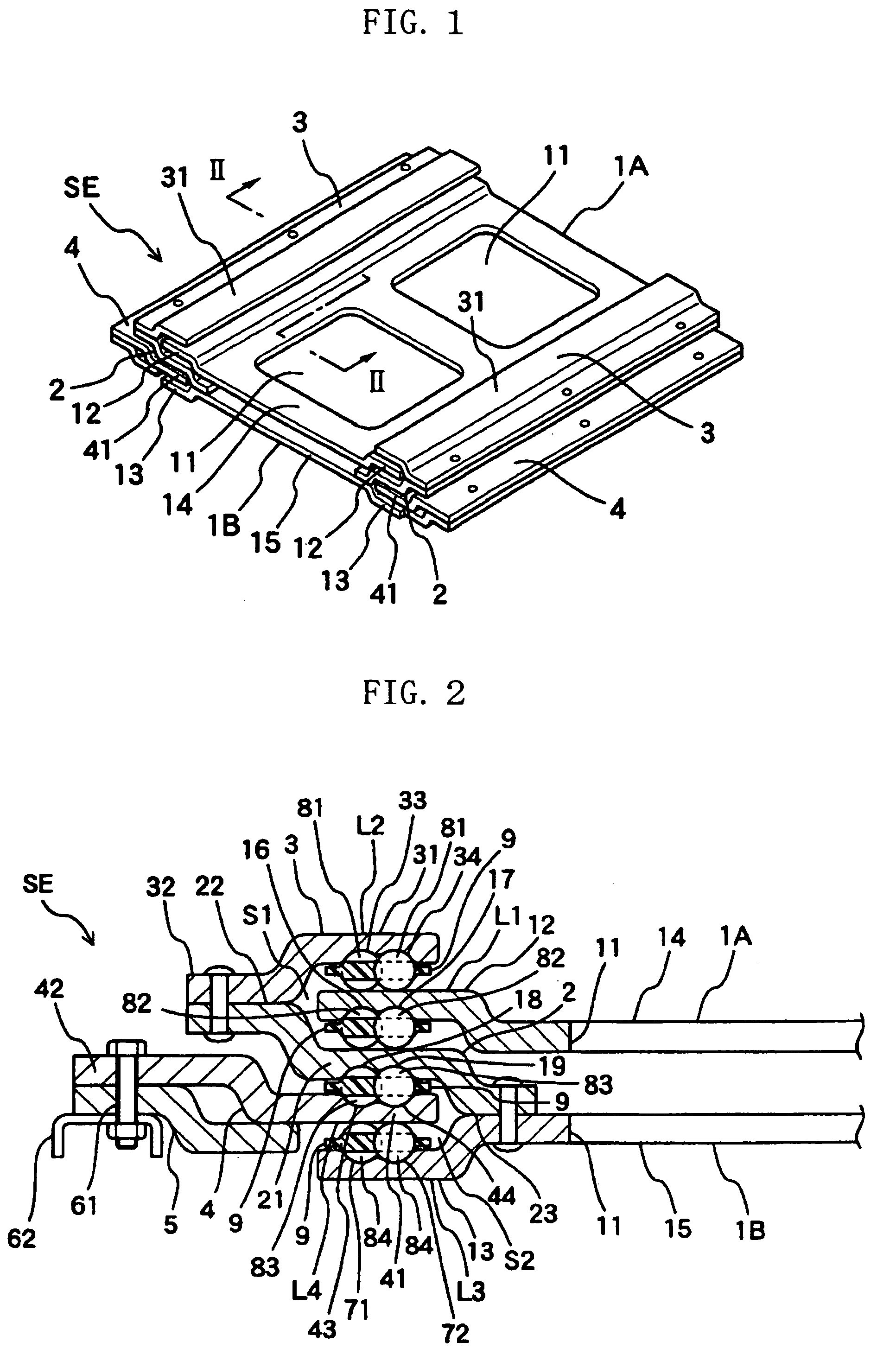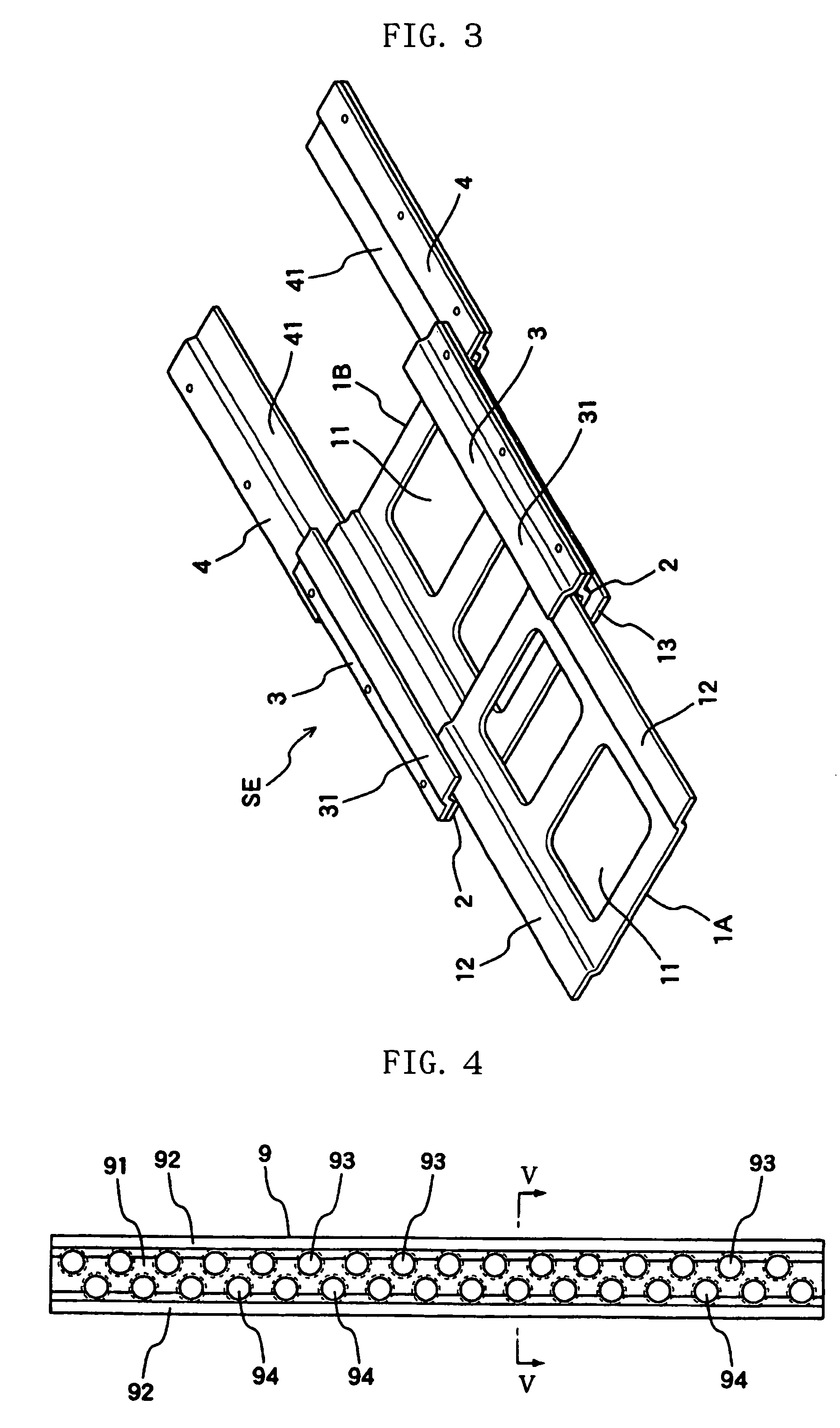Slide device
a technology of sliding device and sliding plate, which is applied in the direction of convertible stools, chairs, furniture parts, etc., can solve the problems of laborious correction
- Summary
- Abstract
- Description
- Claims
- Application Information
AI Technical Summary
Benefits of technology
Problems solved by technology
Method used
Image
Examples
first embodiment
[0039]FIG. 1 shows the outlook of a slide device SE. The slide device SE has two rectangular slide plates 1A, 1B disposed vertically and parallel with each other. A rectangular hole 11 for making the slide device SE lightweight is formed at front and rear positions of a central part of each of the slide plates 1A, 1B. Both side parts 12, 13 (only one side part is shown in FIG. 2) of the lower slide plate 1B and the upper slide plate 1A curve upward or downward from general parts 14, 15 respectively and extend horizontally in a constant width. The slide plates 1A, 1B are formed in the same configuration by press molding and symmetrically disposed at upper and lower positions by inverting one slide plate. The side part 12 of the slide plate 1A serves as a rail member L1 which is a second-type rail member and a movable-side rail member. The side part 13 of the slide plate 1B constitutes a part of a rail member L3 which is described later.
[0040]A connection plate 2 is fixed to an edge o...
second embodiment
[0048]In the first embodiment, two slide plates, namely, the upper and lower slide plates are provided. But three or more side plates can be provided. FIG. 6 shows a schematic construction of a slide device having four slide plates. In FIG. 6, illustration of balls is omitted. In FIG. 6, four slide plates 1C through 1F are arranged vertically in an approximately horizontal posture. With the connection plate 2, the hold-down plate 3, and side parts of the slide plates 1C through 1F, rail members L6 through L11 forming U-shaped spaces open toward the inner and outer sides of the slide device SE are formed. These members are so disposed that they overlap each other in the vertical direction. In the rail members L7 through L10, an upper side 30 and a lower side 10 of one rail member penetrate into the U-shaped space of the other rail member. The upper sides 30 and the lower sides 10 constitute second-type rail members. The rail members L8, L10, provided on the slide plates 1E, 1F respec...
third embodiment
[0049]FIG. 7 shows a sectional view of main parts of a slide device. In FIG. 7, a fixed-side rail member (only one fixed-side rail member is shown) 60 of the slide device is constructed by connecting an upper rail 601 and a lower rail 602 to each other. That is, a long plate is formed by press molding to form the upper rail 601 and the lower rail 602. Half parts 6012 and 6022 extending approximately horizontally are bent vertically upward and downward from half parts 6011 and 6021 respectively at approximately the center of the upper rail 601 and the lower rail 602 in the widthwise direction of the rail. Thus the upper rail 601 and the lower rail 602 have the same configuration in section. The half parts 6011 and 6021 are butted against each other with the half parts 6011 and 6021 located symmetrically and vertically. The half parts 6011 and 6021 are fixedly connected to a bracket M2 on a floor F with a bolt M1 penetrating through the half parts 6011 and 6021 vertically. On an oppos...
PUM
 Login to View More
Login to View More Abstract
Description
Claims
Application Information
 Login to View More
Login to View More - R&D
- Intellectual Property
- Life Sciences
- Materials
- Tech Scout
- Unparalleled Data Quality
- Higher Quality Content
- 60% Fewer Hallucinations
Browse by: Latest US Patents, China's latest patents, Technical Efficacy Thesaurus, Application Domain, Technology Topic, Popular Technical Reports.
© 2025 PatSnap. All rights reserved.Legal|Privacy policy|Modern Slavery Act Transparency Statement|Sitemap|About US| Contact US: help@patsnap.com



